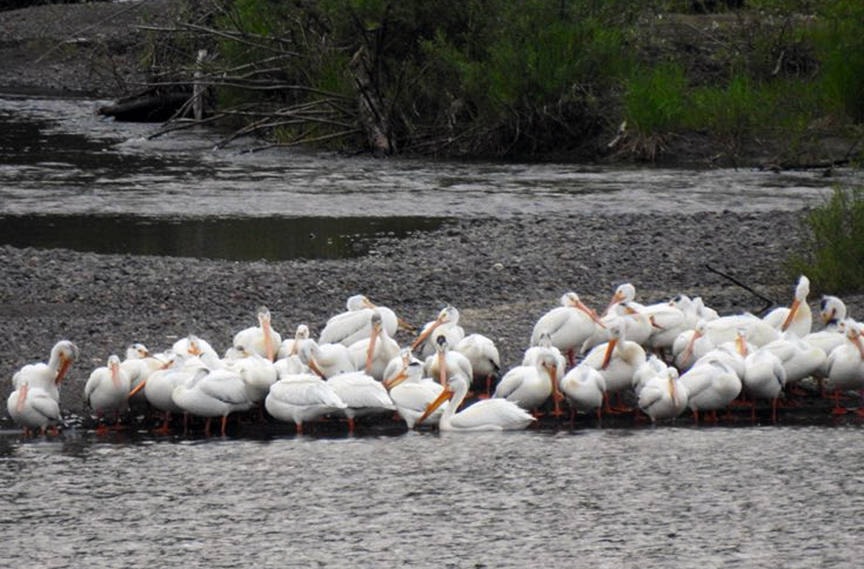When a Burns Lake resident saw a flock of pelicans in the area, they sent across the photo to Lakes District News inquiring about the rarity of the bird’s sighting. Lakes District News decided to investigate this further, and found out that even though these birds might be sighted rarely, they are not rare to the region.
Pelicans are migratory birds, however they are considered to be a provincial or territorial responsibility and are not considered as migratory birds under the Migratory Birds Convention Act, according to the Ministry of Environment and Climate Change.
Guy L. Monty, a wildlife consultant specializing in birds confirmed this and said, “Because there are so many lakes in the B.C. interior, they have a lot of feeding sites to choose from. This means that they may only visit a certain lake once every few years. And if human observers happen to miss seeing them on that particular visit, it may seem like these birds are out of place or lost.”
Monty, who is currently working out of Vancouver Island, has lived in the Ootsa Lake area for several years and continues to work in the B.C. interior studying birds and their patterns.
According to Monty, American White Pelicans are a type of pelican that spend the breeding season on freshwater lakes, and then migrate to salt water in the fall.
“There are several large breeding colonies of American White Pelicans in the Chilcotin region in B.C. A typical behavior of this species is wandering over a very large area to access abundant food resources. They search far and wide, looking for small schooling fish. Because they are an efficient soaring bird, they can easily travel more than 100 kilometres in a day to feed, and the return to their nests,” he said.
Monty also described their breeding pattern, wherein they do not breed in their first few years of life, so there is also a population of younger birds that wander even further because they do not have eggs or chicks to tend to.
Monty believes that the pelicans’ long journeys and breeding patterns combined, make for a brilliant strategy as it allows the lakes to recover after the birds have fed there.
“So yes, American White Pelicans are absolutely normal in the central interior of B.C., and are in no way new or rare. They just have a massive area to forage in, so they may not be seen often,” said Monty.
American White Pelican has been legally designated as Endangered Species in B.C. according to the B.C. government website. The website also mentions that there is only one nesting colony of the American White Pelicans in the interior B.C. and that’s in Stum Lake in White Pelican Provincial Park in Chilcotin region, 70 kilometres west of Williams Lake. That is definitely a long ways away from Burns Lake for the pelicans to come visit but since it is not such a deviation for them to come to one of the local lakes, you might just be able to spot one if you keep your eyes peeled.
Due to the nature of the birds and their need for solitude, the B.C. government website also asks people to “respect the solitude that these great white birds need.”
Priyanka Ketkar
Multimedia journalist
@PriyankaKetkar
priyanka.ketkar@ldnews.net
Like us on Facebook and follows us on Twitter.
Want to support local journalism during the pandemic? Make a donation here.
